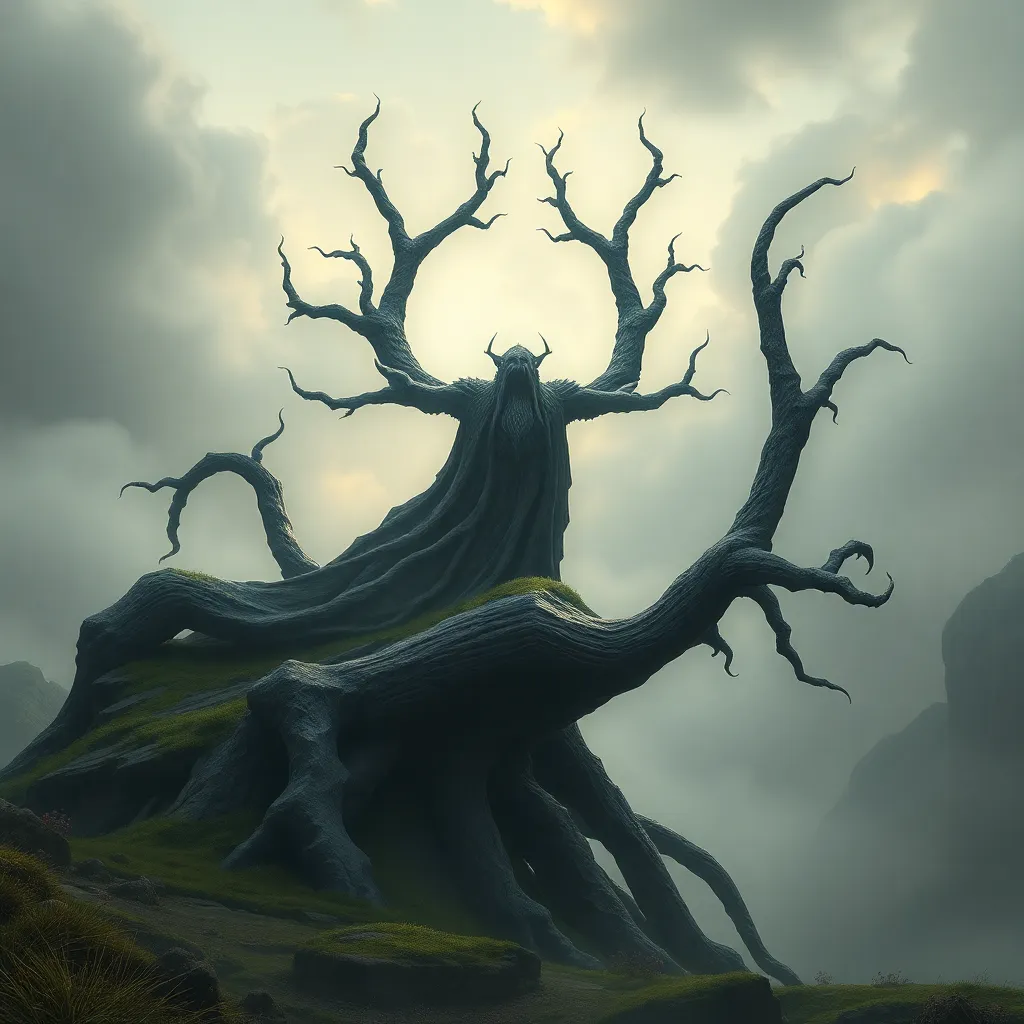The Underworld: Myths That Challenge Our Understanding of Life
I. Introduction
The concept of the Underworld has fascinated humanity across cultures and ages. Defined variably as a realm of the dead, a place of judgment, or a mystical domain, the Underworld serves as a poignant symbol in various mythologies. This article delves into the significance of these myths, exploring how they illuminate our understanding of life, death, and the human experience.
Myths about the Underworld are crucial in shaping our perceptions of mortality and the afterlife. They provide frameworks through which societies make sense of death, loss, and the moral implications of human behavior. In this article, we will explore various cultural depictions of the Underworld, analyze the psychological impact of these myths, and discuss their relevance in modern contexts.
II. The Concept of the Underworld Across Cultures
Across various cultures, the Underworld is depicted with unique characteristics, yet it serves a common purpose: to explain what happens after death and to provide moral lessons.
A. Ancient Greek Underworld: Hades and its significance
In ancient Greek mythology, the Underworld, known as Hades, was ruled by the god of the same name. It was a complex realm where souls were judged and assigned to different areas based on their deeds in life. The significance of Hades lies not only in its role as a destination for the dead but also in its representation of human morality and the consequences of one’s choices.
B. The Egyptian Duat: Afterlife journey and judgment
The Egyptian concept of the Underworld, referred to as the Duat, depicts a mystical journey that the deceased must undertake. Upon death, souls would face judgment by the god Osiris, where their hearts were weighed against the feather of Ma’at, symbolizing truth and justice. This myth illustrates the importance of living a virtuous life, as the outcome determined one’s eternal fate.
C. The Norse Hel: A realm for the unheroic and its implications
In Norse mythology, Hel is the realm where those who did not die gloriously in battle were sent. It is often depicted as a cold, bleak place, highlighting the cultural valorization of heroism. Hel serves to emphasize the Norse belief in honor and the afterlife’s connection to one’s earthly actions.
III. The Role of Myths in Shaping Human Understanding of Death
Myths about the Underworld play a profound role in shaping human understanding of death and mortality.
A. The psychological impact of myths on mortality perception
Myths can influence how individuals perceive their mortality. They offer narratives that help people grapple with the idea of death, providing a sense of order and understanding in the face of the unknown.
B. Myths as a means of coping with loss and grief
- Myths offer comfort through explanations of an afterlife.
- They provide rituals and practices that help communities process grief.
- Stories of resurrection or reincarnation can instill hope in the bereaved.
C. The cultural narratives that provide comfort and meaning
Many cultures have developed narratives that give meaning to death, allowing individuals to find solace and understanding. These stories can create a shared sense of community and continuity.
IV. Symbolism of the Underworld in Literature and Art
The Underworld has been a rich source of inspiration for literature and art, serving as a backdrop for exploring human struggles and moral dilemmas.
A. Depictions of the Underworld in classical literature (e.g., “The Divine Comedy”)
Dante Alighieri’s “The Divine Comedy” is one of the most famous literary works that depict the Underworld. It presents a vivid portrayal of Hell, Purgatory, and Paradise, illustrating the consequences of earthly actions and the journey toward redemption.
B. Artistic representations and their interpretations
Artists throughout history, from Hieronymus Bosch to Gustave Doré, have illustrated their visions of the Underworld, often reflecting societal fears and moral teachings. These representations invite viewers to contemplate their own lives and choices.
C. The Underworld as a metaphor for human struggles
In literature and art, the Underworld often symbolizes the internal struggles individuals face, representing a journey through adversity toward enlightenment or redemption.
V. The Underworld and the Afterlife: Moral and Ethical Implications
Myths surrounding the Underworld frequently intertwine with moral and ethical considerations, influencing societal values.
A. Judgment and reward: How myths influence moral behavior
Many cultures view the Underworld as a place of judgment, where souls are rewarded or punished based on their earthly conduct. This belief encourages ethical behavior, as individuals seek to avoid negative consequences.
B. The concept of reincarnation and its cultural variations
Reincarnation is a prevalent theme in various cultures, where the soul is reborn into a new body. This cycle emphasizes the importance of one’s actions in previous lives and encourages individuals to lead virtuous lives to attain a better existence.
C. The impact of these beliefs on societal values and ethics
- Encouragement of altruism and compassion.
- Promotion of justice and fairness in societal structures.
- Influence on laws and moral codes.
VI. The Underworld and Personal Transformation
The journey into the Underworld is often portrayed as a transformative experience in myths, symbolizing personal growth and self-discovery.
A. The Hero’s Journey: Descent into the Underworld as a metaphor for personal growth
In many myths, the hero’s descent into the Underworld represents a crucial stage in their journey. This descent often leads to a confrontation with fears and challenges, ultimately resulting in personal transformation.
B. Case studies of myths that depict transformation through trial (e.g., Inanna, Orpheus)
Inanna’s descent into the Underworld and Orpheus’s journey to reclaim Eurydice are prime examples of how these narratives illustrate the trials one must face to achieve growth and understanding.
C. The therapeutic implications of facing one’s Underworld
Confronting personal fears and challenges, akin to a mythological descent, can be a powerful therapeutic process, facilitating healing and growth.
VII. Modern Interpretations of Ancient Myths
In contemporary society, ancient myths continue to resonate, reflecting their enduring relevance.
A. How contemporary society views the Underworld
Modern interpretations of the Underworld often blend traditional beliefs with new perspectives, allowing for a diverse understanding of death and the afterlife.
B. The resurgence of interest in mythology in modern spirituality
With the rise of new-age spirituality, many individuals are exploring ancient myths for guidance and insight, finding personal meaning in these timeless stories.
C. The Underworld in pop culture: movies, books, and video games
The Underworld has become a popular theme in movies, literature, and video games, from films like “The Matrix” to video games such as “God of War,” showcasing its relevance in exploring human experience.
VIII. Psychological Perspectives on the Underworld
Psychology offers valuable insights into how the concept of the Underworld shapes our understanding of life and death.
A. Jungian interpretations of the Underworld as the unconscious
Carl Jung viewed the Underworld as a representation of the unconscious mind, where individuals confront their repressed fears and desires.
B. The role of archetypes in understanding life and death
Archetypes associated with the Underworld, such as the hero or the guide, help individuals navigate their own experiences of life and death, providing a framework for understanding personal struggles.
C. The therapeutic uses of myth in modern psychology
Therapists increasingly use mythological frameworks to help clients process grief, loss, and existential questions, demonstrating the practical application of these ancient narratives in modern life.
IX. The Underworld in Today’s Global Context
As globalization progresses, the blending of Underworld myths presents both challenges and opportunities for contemporary societies.
A. Globalization and the blending of Underworld myths
With the exchange of cultural narratives, Underworld myths are merging, creating new interpretations and understandings that reflect a global perspective



